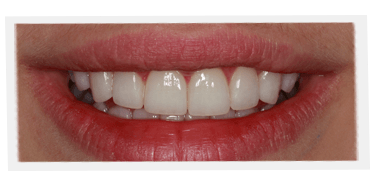
What’s in a smile? Well, before we understand the details of a smile, we must first agree on a definition. And that, as it turns out, is much harder than we think. Below is an excerpt from my book, A Guide to the Perfect Smile, where we cover the meanings of a smile, and how important it is we agree on the definition before talking about solutions. There’s a lot more to it than we all thought. Luckily, with years of experience in cosmetic dentistry, we’ve become the go-to clinic for natural looking porcelain veneers, bridges, and dental implants. Enjoy the read!
“There was something a little crazy about all this for me and many other practitioners in the 1990s when the most recent demographic wave got rolling. Patients were asking for their smiles to be fixed. New technologies were available to help make that happen. But, maddeningly, dentists weren’t able to quantify what patients were requesting. How big? How small? How natural?
When I was planning to open a practice devoted to smile dentistry, I began to think about the public and the dental profession’s need for definitions. It was only natural for me to look for these definitions in the literature of dentistry. But I was surprised by how little I could find there. I also looked into the theory and practice of plastic surgery and was equally surprised that many such surgeons were fixing smiles with no thought to the realities of the underlying teeth.
It seemed as if I was starting from the very beginning. I even had to look up “smile” in my trusty Webster’s dictionary:
Smile 1. n (Change of) facial expression, usu. With parting of lips and upward turning of their ends, expressing amusement, pleasure, affection, skepticism, contempt, etc.;(Fig) pleasant or encouraging appearance. 2.v.i. & t make or have a smile (come up smiling, colloq., recover from adversity and face future optimistically); look pleasantly, encouragingly, propitiously, or scornfully (at, on, etc.; lit. or fig.); express by smiling (smiled a welcome, smiled her appreciation); give (smile) of specific kind.
What a strange situation: Dentists were increasingly considered to be in the smile business, yet the actual definition of the smile didn’t even use the word “teeth.” I remember wondering about myself and my fellow dentist, “So how, then, are we going to change their smiles? Are we planning to become psychiatrists?” Eventually I came up with my own definition by adding to the dictionary definition of words:
…and the manner in which facial muscles, lips, gingiva, and teeth blend to create pleasuring expression.
This only made sense because the work dentists do on teeth affects the facial muscles. If we change the way someone bites, either by moving the jaw forward or back, this changes the hard tissue, which affects the soft tissue. If you change the underlying teeth or bone or jaw, you affect the face and hence the smile.
My definition therefore brings into focus what dentists do when it comes to fixing smiles. Our work affects the lips. By lengthening teeth, for instance, we make the upper lip thicker. By changing the arc of the shape of the teeth, we change the way the curve in the lips can go out. We can fix smiles that are too gummy by cutting the gums back or by moving the jaw up. I made it my mission to quantify the smile by defining the smile scientifically. Out of this work, I developed the terminology of smile pattern, types and stages, all of which will discussed in greater details in chapter two.”



